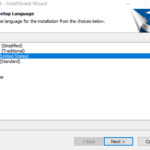In Windows 10 or 11, you can use Disk Management, DiskPart, and a free third-party partition manager to extend your C drive when it’s almost full and your machine is running slower. You may simply add more space to your C drive with each of them.
You might see a Low Disk Space warning on the C drive after using a Windows-installed PC for a while. For users like game testers, editors, and designers whose jobs depend on computers, it is a very bothersome problem. In addition to transferring programs to another drive, performing disk cleanup, and other methods to clear up space on C drive, you can also attempt extending C drive to resolve the issue.
How to extend C drive space in Windows 11/10
Don’t worry if you find yourself in such a circumstance. Extending the system partition can be one approach to solving this issue and enhancing PC performance. How can the C drive be made larger in Windows 11/10? You have the easiest approach to expand C drive with EaseUS Partition Master.
Download EaseUS Partition Master Now
How to Extend C Drive with EaseUS Partition Master
EaseUS Partition Master Professional is an excellent partition manager that can expand C drive space without losing the data. You may easily expand C drive with or without unallocated space using this application.
You may easily increase the amount of space on your system disk by resizing the C drive. Use EaseUS Partition Manager to increase the amount of free space on your C drive and other partitions when there is no unallocated space left on your hard drive.
Using the EaseUS disk management program, you may manage your hard drives in the following ways without sacrificing any data or effort.
Windows 11 users can get assistance by using the methods listed on this page. For more inspiration on how to expand the C drive in Windows 11, click this website.
Step 1: Free up unallocated space for C drive.
In case the system disk has no unallocated space, use Partition Manager to select “Resize/Move” by right-clicking on a partition adjacent to the C: drive.
After dragging the partition’s left panel to make more room behind the system C: disk, click “OK” to confirm the change.
Step 2: Increase C drive space.
1. Right-click on C: drive and click “Resize/Move”.
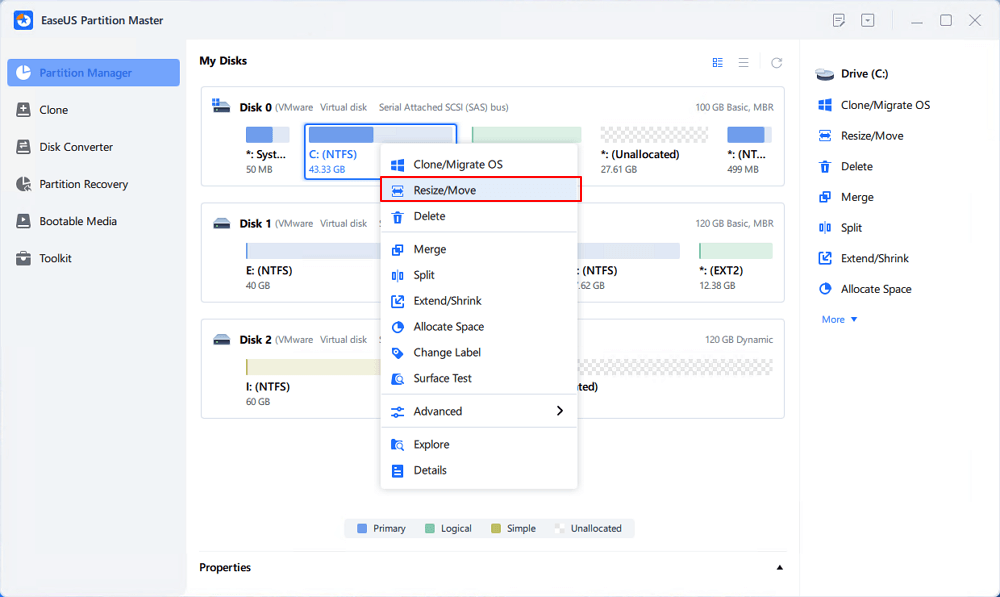
2. To add space to the C: drive, drag the system partition end into unallocated space. and select “OK”.
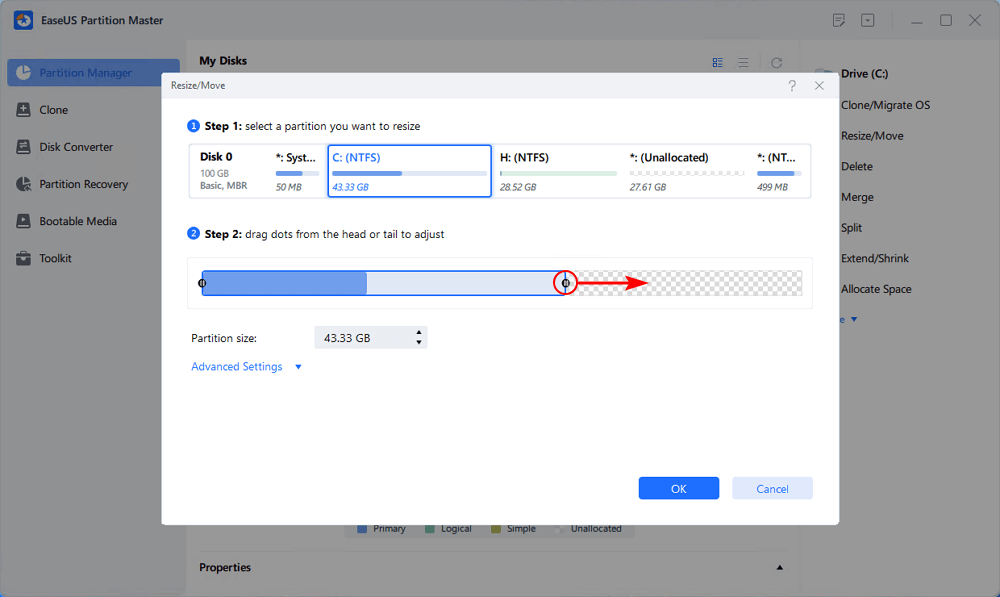
Step 3: Keep all changes to extend C: drive.
Select “Execute Task” and then “Apply” to save the modifications and expand the system C: disk.
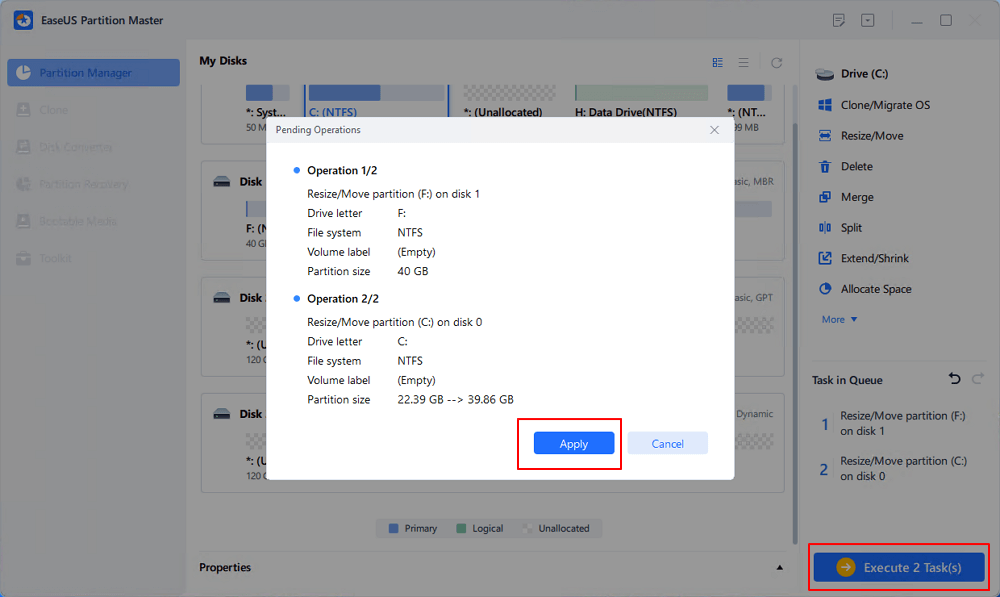
With the EaseUS partition manager, partition management is risk-free for both rookie and expert users. It can get around Windows’ built-in disk management constraints and fully supports all versions of Windows, including Windows 11.
If you believe that this technique is simple and effective for assisting you in extending the C drive, kindly spread the word about it online to assist more of your friends:
Additionally, it offers more sophisticated features like:
- To handle disk drives, create USBs or bootable CDs.
- modifying system files for partitions dynamically, etc.
- Transfer OS to SSD or HDD without having to restart the computer.
- It also makes partition merging simple.
- Above all, the EaseUS partition manager’s user interface is designed with the average user in mind, making all tasks simpler. Users can construct disk partitions of almost any size with this software, and there is no limit on the number of partitions that can be used for data storage.
Method 2. Using Disk Management
There are a few variations in how you can use Disk Management to expand C drive with or without unallocated space. First, see whether there is any unallocated space beside the C drive. Then, to increase the size of your C drive, adhere to the relevant tutorial:
Step 1. Expand C Drive with Unallocated Space
If you locate unallocated space on your drive, take the actions listed below:
1. Toggle between “Disk Management” and the other options by pressing the Windows + X keys.
2. Select “Extend Volume” with a right-click on the disk C drive.
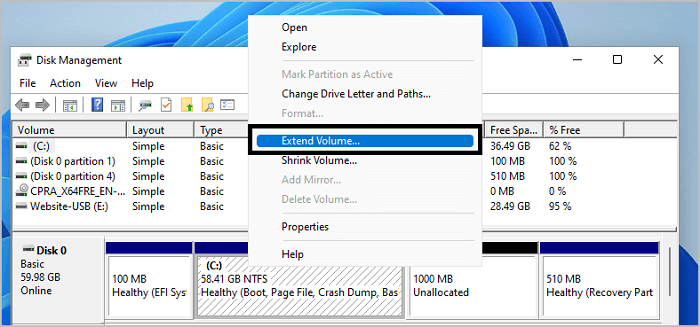
3. Select “Next” in the Extend Volume Wizard.
4. Click “Add” and then “Next” after selecting the accessible disk that has the amount of unallocated space that needs to be added to the C drive.
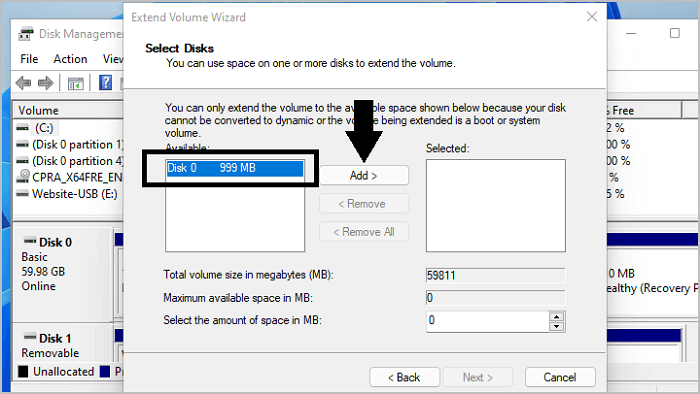
5. To begin increasing the space on the C drive, click “Finish”.
After the procedure is finished, close the Disk Management tool. In Windows 11, the C Drive Space has been successfully extended by using the Disk Management tool. If this article helps you expand the space on your C drive, please feel free to share it with others as well:
Step 2. Increase C Drive Space without Unallocated Space
Inspect your system C: disk for any empty space. In case you are unable to identify any free space, adhere to these guidelines.
1. Type diskmgmt.msc using the Windows + R keyboard shortcuts, then hit Enter.
2. Select “Shrink Volume” with a right-click on a neighboring partition that is next to the C disk.
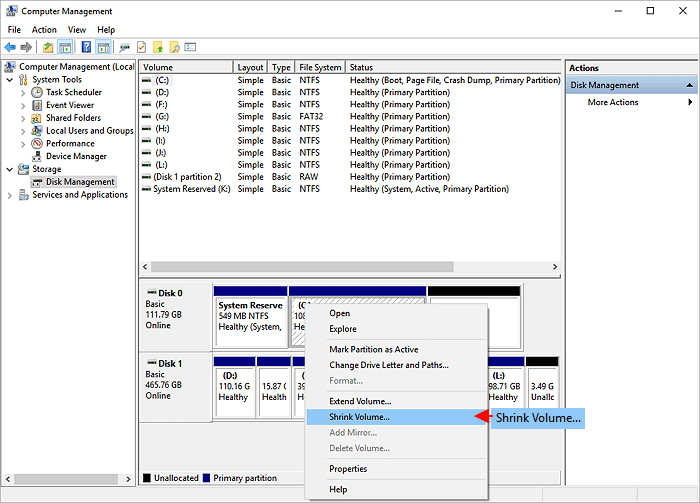
3. Put the size you need to shrink for extending the C drive in MB, then select “Shrink” to confirm.
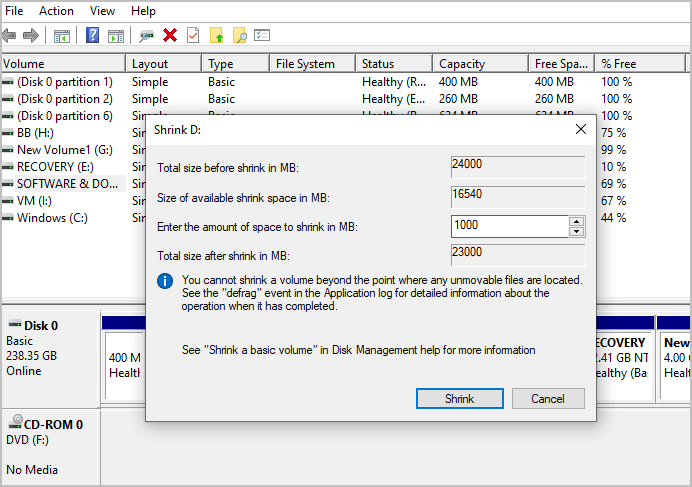
4. Click the C drive with a right-click and select “Extend Volume.”
5. Click “Next” in the Extend Volume Wizard and choose how much more unallocated space you want to add to the C disk by shrinking it.
6. Select “Add”, “Next”, and “Finish”.
Note: You can also use this tutorial to expand other drives, for example, your D drive.
Method 3. Use CMD
A useful tool for increasing system C drive space is Diskpart. I’ll walk you through using this program to increase the size of the C drive in Windows 11 in the stages that follow.
Note: This method should only be used by experienced users; it is not as ideal for beginners as the other two methods stated above.
Step 1. Extend C Drive When Unallocated Space is Available
1. Open the Command Prompt as Administrator
2: Enter diskpart and hit the enter key.
To execute the command, input the following commands and hit Enter.
- list disk
- select disk 0 (replace the number 0 with your system disk number)
- list partition
- select partition 3 (replace the number 3 with your system C drive letter number)
- extend
- exit
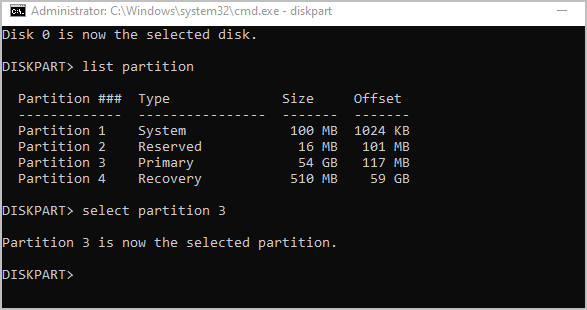
Step 2. Increase C Drive Space When There Is No Unallocated Space
Trying to extend a partitioned volume usually results in the Virtual Disk Service error. It may occur as a result of a defective disk partition, a nearly full system drive, or inadequate space left next to it.
If this is the case, it means that there is no unallocated space behind the data on your C drive. With Windows 11, you may still expand the C drive capacity by following these steps:
1. Type cmd by pressing Windows + R, then hit Ctrl + Shift + Enter to run the program as an administrator.
2. Enter diskpart and hit the Enter key.
To execute the command, input the following commands and hit Enter.
- list disk
- select disk 0 (replace the number 0 with your system disk letter)
- list partition
- select partition n (replace the number n with the partition number that you want to delete)
- delete partition
- select partition n ( replace n with your C: drive number)
- extend
- exit
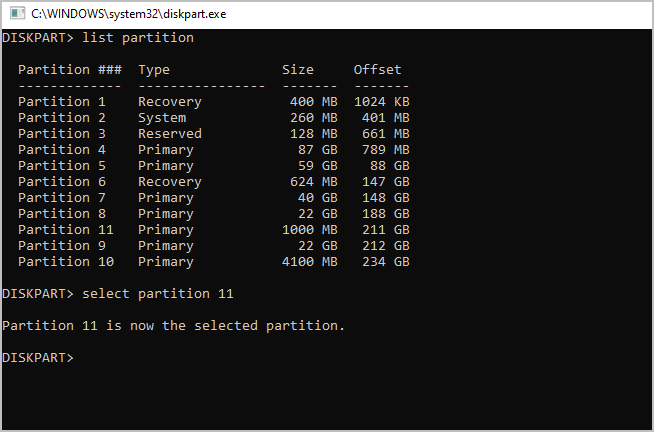
You can click the share button below to help someone in need if you think this information on how to extend the C drive in Windows 11 was helpful to you.
Conclusion
Managing a smaller C disk on your Windows 11 computer could be difficult. Thankfully, a new disk does not need to be purchased. You merely have to increase one partition to create some free space for new documents. This lesson offers three comprehensive instructions for expanding the C drive in Windows 11.
You must merge the C partition with the unallocated space of other partitions in order to increase the size of the C disk. If, however, your Windows computer is not outfitted with a third-party partition tool, you may encounter difficulties attempting to carry out this procedure manually. EaseUS partition manager is the best choice.




